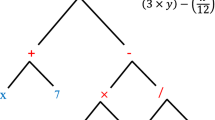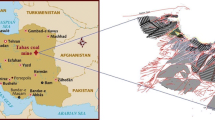Abstract
A safe road transport requires adequate friction between vehicle tires and pavement surface for safe travels. Adequate friction is essential for a vehicle to safely maneuver. Inadequate friction is directly correlated to the accident hazard, particularly in wet weather conditions. Quality of pavement materials has a prodigious effect on skid resistance and high-quality materials allow adequate pavement frictional resistance for an extended period. Science evaluation of frictional characteristics depends on physical, chemical, and mineralogical properties of the aggregate, type of mix, binder/bitumen content, water film thickness, etc., and it necessities a costly and time-consuming test protocol. In the present research, a model is developed for the evaluation of skid resistance in terms of the British pendulum number (BPN), using experimental observations, with the aid of machine learning tools. In the present work, group method of data handling (GMDH) and multigene symbolic genetic programming (MSGP) have been used to model the BPN. Developed model is capable to simplify extremely nonlinear deviations in data as well as forecast the frictional performance from experimental data. It is also found that the performance of the MSGP (R2 = 0.99) is more encouraging and better than that of the GMDH model (R2 = 0.98) for the prediction of BPN. The analytical expression obtained through MSGP in the present study has been also subjected to sensitivity analysis to assess the effect of individual parameters in prediction of BPN.











Similar content being viewed by others
References
Al-Mistarehi B (2014) Superpave system versus marshall design procedure for asphalt paving mixtures (comparative study). Glob J Res Eng 14(5):45–52
Asi IM (2007) Evaluating skid resistance of different asphalt concrete mixes. Build Environ 42(1):325–329
ASTM D 7064 (2008) Standard practice for open graded friction course (OGFC) mix design, West Conshohocken, PA
ASTM (2013) Standard test method for measuring surface frictional properties using the British pendulum tester. ASTM E303-2013, West Conshohocken
Baig ZA, Sait SM, Shaheen A (2013) GMDH-based networks for intelligent intrusion detection. Eng Appl Artif Intell 26(7):1731–1740
Brameier M, Banzhaf W (2001) A comparison of linear genetic programming and neural networks in medical data mining. IEEE Trans Evol Comput 5(1):17–26
Cerezo V, Do MT, Prevost D, Bouteldja M (2014) Friction/water depth relationship—in situ observations and its integration in tire/road friction models. Proc Inst Mech Eng Part J J Eng Tribol 228(11):1285–1297
Chen HM, Kao WK, Tsai HC (2012) Genetic programming for predicting aseismic abilities of school buildings. Eng Appl Artif Intell 25(6):1103–1113
Dahir SH, Henry JJ, (1978) Alternatives for the optimization of aggregate and pavement properties related to friction and wear resistance report no. FHWA-RD-78-209, Federal Highway Administration (FHWA), Washington, DC
David S, John M, Alex G (2004) Genetic programming within civil engineering. In: Proceedings of organisation of the adaptive computing in design and manufacture 2004 conference April 20–22 Engineers House Clifton Bristol UK
Do MT, Cerezo V, Beautru Y, Kane M (2013) Modeling of the connection road surface microtexture/water depth/friction. Wear 302(1–2):1426–1435
Farlow ST (1981) The GMDH Algorithm of Ivakhnenko. J Am Stat 35(4):210–215
Ferreira C (2001) Gene expression programming: a new adaptive algorithm for solving problems. Complex Syst 13(2001):87–129
Haddock JE, O’Brien JP (2013) Hot-mix asphalt pavement frictional resistance as a function of aggregate physical properties. Road Mater Pavement Design 14(sup2):35–56
Hadi MNS, Arfiadi Y (2001) Optimum rigid pavement design by genetic algorithms. Comput Struct 79(17):1617–1624
Hadiwardoyo SP, Sinaga ES, Fikri H (2013) The influence of Buton asphalt additive on skid resistance based on penetration index and temperature. Constr Build Mater 42:5–10
Hall JW, Smith KL, Titus-Glover L, Wambold JC, Yager TJ, Rado Z (2009) Guide for pavement friction. Final report for NCHRP project. Transp Res Board Natl Acad 1:43
Henry JJ (2000) Evaluation of pavement friction characteristics. NCHRP Synthesis 291, National Cooperative Highway Research Program (NCHRP), Washington, DC
IRC (Indian Roads Congress) (2009) Specifications for dense graded bituminous mixes. IRC No. 111, New Delhi, India
IS 15462 (2004) Polymer and rubber modified bitumen. Bureau of Indian Standards, New Delhi
Institute Asphalt (1997) Mix design methods for asphalt concrete and other hot mix types MS-2, 6th edn. Lexington, KY
Ivakhnenko AG (1966) Group method of data handling–a rival of the method of stochastic approximation. Sov Autom Control 13:43–71
Ivakhnenko AG (1971) Polynomial theory of complex systems. IEEE Trans Syst Man Cybern 4:364–378
Ivakhnenko AG, Ivakhnenko GA (1995) The review of problems solvable by algorithms of the group method of data handling (GMDH). Pattern Recognit Image Anal C/C Raspoznavaniye Obrazov I Analiz Izobrazhenii 5:527–535
Kalantary F, Ardalan H, Nariman-Zadeh N (2009) An investigation on the Su–NSPT correlation using GMDH type neural networks and genetic algorithms. Eng Geol 104(1–2):144–155
Kalogiron SA (2007) Artificial intelligence in energy and renewable energy systems. Nova Science Publisher, New York
Kogbara RB, Masad EA, Kassem E, Scarpas AT, Anupam K (2016) A state-of-the-art review of parameters influencing measurement and modeling of skid resistance of asphalt pavements. Constr Build Mater 114:602–617
Koza JR (1992) Genetic programming: on the programming of computers by means of natural selection. MIT Press, New York
Liang Y, Zhang M, Browne WN (2017) Image feature selection using genetic programming for figure-ground segmentation. Eng Appl Artif Intell 62:96–108
Lu X, Isacsson U (2000) Modification of road bitumens with thermoplastic polymers. Polym Testing 20(1):77–86
Madala HR, Ivakhnenko AG (1994) Inductive learning algorithms for complex systems modeling, vol 368. CRC Press, Boca Raton
Mehrara M, Moeini A, Ahrari M, Erfanifard A (2009) RETRACTED: Investigating the efficiency in oil futures market based on GMDH approach. Exp Syst Appl 36(4):7479
Miller AJ, Cluer BL (1998) Modeling considerations for simulation of flow in bedrock channels. Geophys Monogr Am Geophys Union 107:61–104
Moore Desmond F (1975) The friction of pneumatic tyres. Elsevier Scientific Publishing Company, Amsterdam (The Netherlands)
Morias DN, Arnold JG, Van Liew MW, Bigner RL, Harmel RD, Veith TL (2007) Model evaluation guidelines for systematic quantification of accuracy in watershed simulations. J Am Soc Agric Biol Eng 50(3):885–900
Najafzadeh M (2015) Neurofuzzy-based GMDH-PSO to predict maximum scour depth at equilibrium at culvert outlets. J Pipeline Syst Eng Pract 7(1):06015001
Najafzadeh M, Azamathulla HM (2013) Group method of data handling to predict scour depth around bridge piers. Neural Comput Appl 23(7–8):2107–2112
Najafzadeh M, Balf MR, Rashedi E (2016) Prediction of maximum scour depth around piers with debris accumulation using EPR, MT, and GEP models. J Hydroinf 18(5):867–884
Najafzadeh M, Barani GA (2011) Comparison of group method of data handling based genetic programming and back propagation systems to predict scour depth around bridge piers. Sci Iran 18(6):1207–1213
Najafzadeh M, Barani GA (2013) Discussion of “genetic programming to predict river pipeline scour” by H. Md. Azamathulla and Aminuddin Ab Ghani. J Pipeline Syst Eng Pract 4(4):07013001
Najafzadeh M, Barani GA, Azamathulla HM (2014) Prediction of pipeline scour depth in clear-water and live-bed conditions using group method of data handling. Neural Comput Appl 24(3–4):629–635
Najafzadeh M, Barani GA, Hessami-Kermani MR (2013) Group method of data handling to predict scour depth around vertical piles under regular waves. Sci Iran 20(3):406–413
Najafzadeh M, Barani GA, Hessami-Kermani MR (2015) Evaluation of GMDH networks for prediction of local scour depth at bridge abutments in coarse sediments with thinly armored beds. Ocean Eng 104:387–396
Najafzadeh M, Bonakdari H (2016) Application of a neuro-fuzzy GMDH model for predicting the velocity at limit of deposition in storm sewers. J Pipeline Syst Eng Pract 8(1):06016003
Najafzadeh M, Saberi-Movahed F (2018) GMDH-GEP to predict free span expansion rates below pipelines under waves. Mar Georesour Geotechnol 37(3):1–18
Najafzadeh M, Tafarojnoruz A (2016) Evaluation of neuro-fuzzy GMDH-based particle swarm optimization to predict longitudinal dispersion coefficient in rivers. Environ Earth Sci 75(2):157
Najafzadeh M, Zahiri A (2015) Neuro-fuzzy GMDH-based evolutionary algorithms to predict flow discharge in straight compound channels. J Hydrol Eng 20(12):04015035
Ongel A, Lu Q, Harvey J (2009) Frictional properties of asphalt concrete mixes. Proc Inst Civil Eng Transp Thomas Telford Ltd 162(1):19–26
Park SW, Park HM, Hwang JJ (2010) Application of genetic algorithm and finite element method for backcalculating layer moduli of flexible pavements. KSCE J Civil Eng 14(2):183–190
Pattanaik ML, Choudhary R, Kumar B (2017) Evaluation of frictional pavement resistance as a function of aggregate physical properties. J Transp Eng Part B Pavements 143(2):04017003 (1–8)
Prowell BD, Zhang J, Brown ER (2005) Aggregate properties and the performance of superpave-designed hot mix asphalt, vol 539. Transportation Research Board National Cooperative Highway Research Program (NCHRP), Washington
Puig V, Witczak M, Nejjari F, Quevedo J, Korbicz J (2007) A GMDH neural network-based approach to passive robust fault detection using a constraint satisfaction backward test. Eng Appl Artif Intell 20(7):886–897
Reddy MA, Reddy KS, Pandey BB (2004) Selection of genetic algorithm parameters for backcalculation of pavement moduli. Int J Pavement Eng 5(2):81–90
Rezaei A, Masad E (2013) Experimental-based model for predicting the skid resistance of asphalt pavements. Int J Pavement Eng 14(1):24–35
Rezaei A (2010) Development of a prediction model for skid resistance of asphalt pavements. Ph.D. dissertation, Texas A&M Univ., College Station, TX
Sabey BE, Williams T, Lupton GN (1970) Factors affecting the friction of tires on wet roads. SAE Trans 76-A:1203–1218
Sadid H, Wabrek R, Dongare S, Coryell B, Ebrahimpour A (2010) Material acceptance risk analysis: superpave hot mix asphalt (No. FHWA-ID-10-182B). Idaho. Transportation Dept, Boise, ID
Searson D (2009) GPTIPS: Genetic programming and symbolic regression for MATLAB. http://gptips.sourceforge.net. Accessed 15 Jul 2016
Shahnazari H, Tutunchian MA, Mashayekhi M, Amini AA (2012) Application of soft computing for prediction of pavement condition index. J Transp Eng 138(12):1495–1506
Swami BL, Mehta YA, Bose S (2004) A comparison of the Marshall and Superpave design procedure for materials sourced in India. Int J Pavement Eng 5(3):163–173
Tamura H, Kondo T (1980) Heuristics free group method of data handling algorithm of generating optimal partial polynomials with application to air pollution prediction. Int J Syst Sci 11(9):1095–1111
Wilson DJ (2013) The effect of rainfall and contaminants on road pavement skid resistance New Zealand Transport Agency research report 515
Witczak M, Korbicz J, Mrugalski M, Patton RJ (2006) A GMDH neural network-based approach to robust fault diagnosis: application to the DAMADICS benchmark problem. Control Eng Pract 14(6):671–683
Xiao F, Putman BJ, Amirkhanian SN (2011) Viscosity prediction of CRM binders using artificial neural network approach. Int J Pavement Eng 12(5):485–495
Yonaba H, Anctil F, Fortin V (2010) Comparing sigmoid transfer functions for neural network multistep ahead stream flow forecasting. J Hydrol Eng 15(4):275–283
Ziari H, Sobhani J, Ayoubinejad J, Hartmann T (2016) Prediction of IRI in short and long terms for flexible pavements: aNN and GMDH methods. Int J Pavement Eng 17(9):776–788
Acknowledgements
The authors gratefully acknowledge the financial support of Department of Science and Technology (DST), Govt. of India under the grant DST/TSG/WM/2015/525-G.
Author information
Authors and Affiliations
Corresponding author
Additional information
Publisher’s Note
Springer Nature remains neutral with regard to jurisdictional claims in published maps and institutional affiliations.
Rights and permissions
About this article
Cite this article
Pattanaik, M.L., Choudhary, R. & Kumar, B. Prediction of frictional characteristics of bituminous mixes using group method of data handling and multigene symbolic genetic programming. Engineering with Computers 36, 1875–1888 (2020). https://doi.org/10.1007/s00366-019-00802-4
Received:
Accepted:
Published:
Issue Date:
DOI: https://doi.org/10.1007/s00366-019-00802-4




